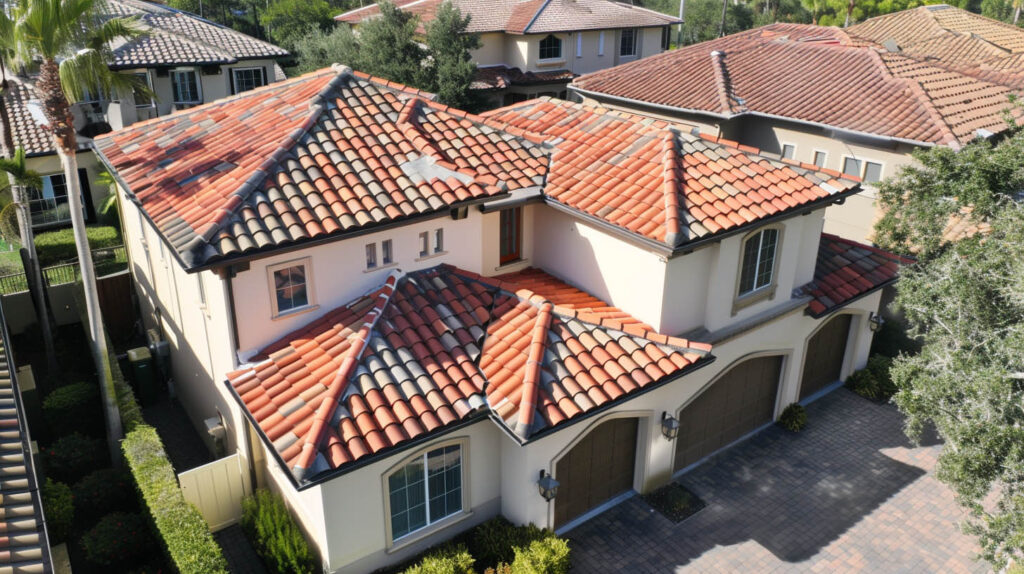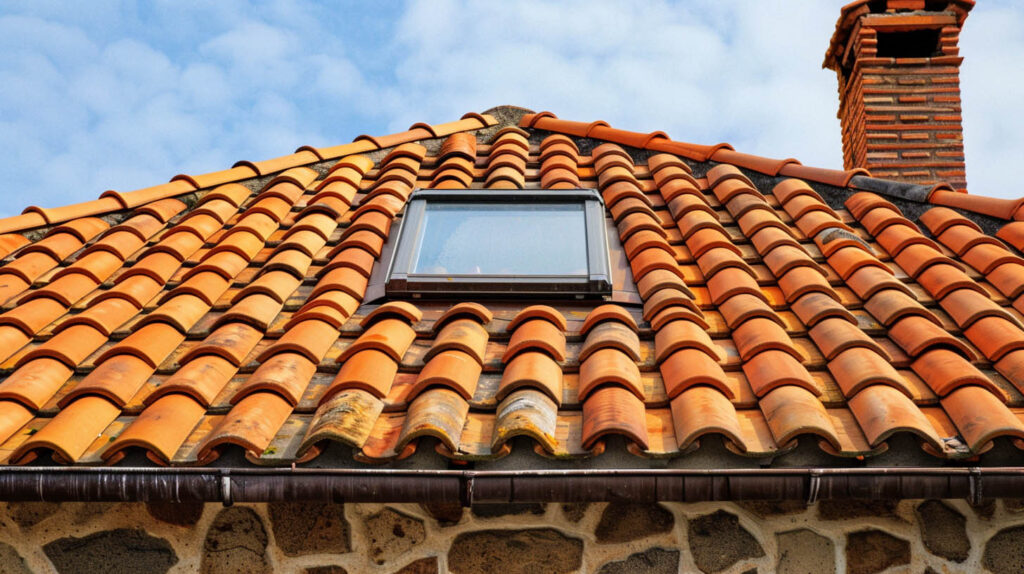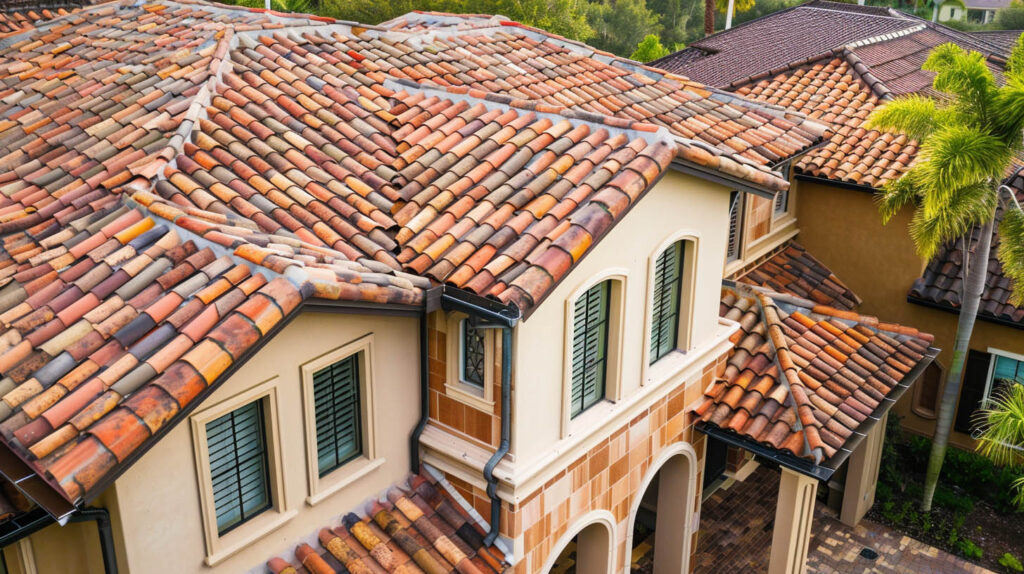A beautiful tile roof offers timeless appeal and impressive durability. However, the true protector of your home lies just beneath the surface. The roof underlayment is a critical component of your roofing system, acting as the main line of defense against the elements. At Tile Roofing San Diego, we understand the importance of high-quality underlayment in ensuring your tile roof lasts for decades to come. Our expertise in roofing solutions helps protect your investment and your home, making us a trusted choice for all your roofing needs in the San Diego, CA, area.
Understanding Tile Roof Lifespan and the Role of Underlayment
While tile roofs are known for their longevity, the tiles themselves are only part of the equation. The roof underlayment is the unseen hero that provides the primary layer of water protection for your home.
The quality of this hidden layer directly affects the roof’s lifespan. A superior underlayment shields the roof deck from moisture, preventing rot and structural damage that can shorten the life of your entire roofing system.
Contact UsKey Functions of Roof Underlayment in San Diego Homes
The roof underlayment serves several vital functions within your roofing system, especially in San Diego’s unique climate. It is not just an optional extra; it is a fundamental component required by industry standards.
Its primary job is to act as a waterproof barrier. Tiles shed water, but the underlayment is what keeps it from reaching your roof deck. Signs that your underlayment might need replacement include water stains on your ceiling, visible sagging, or multiple cracked tiles. Key functions include:
- Providing a waterproof barrier against moisture
- Protecting the roof deck during and after installation
- Meeting local building code requirements for safety

How Underlayment Contributes to Tile Roof Durability
Underlayment plays a pivotal role in enhancing the durability of a tile roof system. By acting as a barrier against moisture intrusion and diminishing the risk of leaks, quality underlayment significantly protects the structural integrity beneath. Additionally, it helps prevent issues like mold growth and moisture buildup, critical in regions experiencing extreme weather conditions. Proper installation of the underlayment not only prolongs the life of your tile roof but also contributes to maintaining its aesthetic appeal and energy efficiency over time.
Types of Underlayment for Tile Roofs
When selecting a roof underlayment for your tile roof, you have several options to consider. The choice of roofing materials is not one to be taken lightly, as each type offers different levels of durability, protection, and cost.
Understanding the differences between these materials is one of the best practices for ensuring your roof is built to last. Let’s explore the most common types available and what they can offer your home.
Comparing Felt, Synthetic, and Rubberized Asphalt Underlayments
Each type of underlayment offers distinct benefits for tile roofing systems. Felt underlayment is traditional, providing a cost-effective option, but may underperform under extreme weather conditions. Synthetic underlayments excel with superior moisture resistance and durability, making them ideal for high humidity environments. Rubberized asphalt underlayment stands out due to its exceptional waterproofing capabilities, effectively preventing water intrusion. Selecting the right underlayment is crucial for maintaining the longevity of a tile roof and ensuring optimal roof performance against local climate challenges.

Choosing the Right Underlayment
Selecting the appropriate underlayment for clay and concrete tiles is crucial for maximizing durability and performance. Clay tiles, known for their aesthetic appeal and longevity, often benefit from synthetic materials that provide superior moisture resistance and insulation. In contrast, concrete tiles, which are heavier, require a more robust underlayment for enhanced structural integrity and support. Consulting with roofing professionals is essential to ensure proper installation and to coincide with the unique characteristics of each material, safeguarding against water intrusion and extending the life of your tile roof.
How Underlayment Quality Impacts Roof Performance
The quality of your underlayment has a direct and significant impact on your roof’s performance. A superior underlayment acts as a steadfast barrier, preventing minor issues like a single cracked tile from turning into a major leak.
During extreme weather conditions, this layer is your home’s last line of defense. High underlayment quality ensures your roof can handle heavy rain and high winds without compromising the structure underneath, maintaining its integrity for years.
Protection Against Leaks and Moisture Intrusion
A high-quality roof underlayment acts as a vital barrier against leaks and moisture intrusion in tile roof systems. It prevents water damage caused by heavy rain, high humidity, and strong winds, significantly enhancing the structural integrity of the roofing materials. Professional roofing contractors emphasize the importance of proper installation, as poorly installed underlayment can lead to costly repairs. Regular inspections and routine maintenance are essential to catch any minor issues early, ensuring the longevity of a tile roof and its underlayment’s efficacy.

Enhanced Longevity and Warranty Considerations
Quality underlayment significantly boosts the longevity of a tile roof. Using premium materials during installation can lead to fewer water intrusion issues and reduced moisture buildup, ultimately preserving the structural integrity of your roofing system. Furthermore, many manufacturers offer extended warranties on tile roofing systems with high-grade underlayments, ensuring protection against costly repairs and enhancing overall roof performance. Regular inspections and routine maintenance of the underlayment can further safeguard your investment, maximizing the life of your roof while minimizing unexpected expenses.
Climate Factors Affecting Underlayment and Tile Roof Lifespan
Your local climate plays a major role in the durability of your roof underlayment. Constant exposure to certain weather conditions can accelerate wear and tear, impacting the overall lifespan of your tile roof.
Elements like intense sun, high humidity, and extreme weather events all put stress on your roofing materials. Understanding these factors is crucial for choosing an underlayment that is built to withstand your area’s specific challenges.
Coastal Weather Challenges in San Diego
Yes, San Diego’s coastal climate presents unique challenges that directly impact how long your underlayment lasts. The combination of intense sun, salty air, and occasional heavy rain creates a demanding environment for any roofing material.
The sun’s UV rays can degrade materials like standard felt more quickly, while wind-driven rain during storms tests the underlayment’s water-shedding capabilities. The salty air can also be corrosive over time. These climate factors make it essential to choose a durable, high-performance underlayment. San Diego’s specific challenges include:
- Year-round intense sun exposure
- Corrosive salt-laden air
- Periods of heavy rain and high winds
- Fluctuating temperatures

Adapting Underlayment Choices for Local Conditions
Selecting the right underlayment involves considering the unique climate conditions of San Diego. With its coastal weather patterns, which include high humidity and strong winds, using synthetic materials can provide superior moisture resistance and enhance the structural integrity of the tile roof system. Roofing professionals recommend underlayments designed for extreme weather, as they deliver long-term performance and protect against costly repairs. Prioritizing proper installation and routine inspections further ensures the longevity of your tile roof in this challenging environment.
Call Us 619-350-1086Connect with Us
In summary, quality underlayment is key to the lifespan and performance of tile roofs, especially in San Diego’s coastal climate. Choosing and installing the right underlayment ensures long-term protection. As an Owens Corning Preferred Contractor and GAF Master Elite Contractor, we deliver expert roofing solutions. Ready to extend your tile roof’s life? Contact us for a quote today!
Frequently Asked Questions
How to extend the life of a tile roof?
You can extend your roof’s lifespan through regular maintenance and routine inspections. Proper care, including promptly repairing damaged tiles and ensuring your roof underlayment is in good condition, is essential for preventing small problems from becoming major ones.
How long does underlayment last on a tile roof?
The lifespan of an underlayment is typically 15 to 35 years, depending on the material. Synthetic and rubberized asphalt last longer than traditional felt. The roof’s lifespan is also affected by extreme weather conditions and a commitment to regular maintenance.
Read our blog: How Tile Roofs Perform in Extreme Heat Waves

